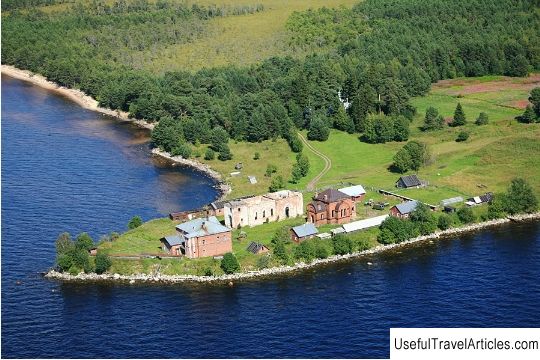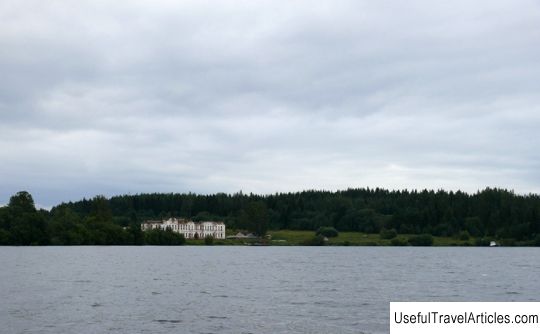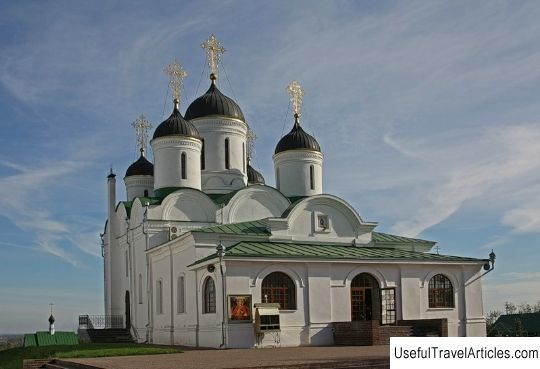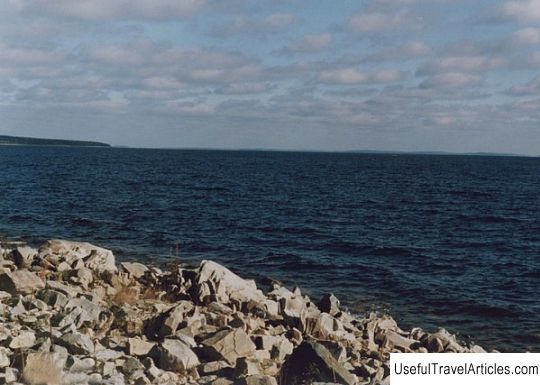Murom monastery description and photos - Russia - Karelia: Pudozh
Rating: 7,8/10 (1893 votes) 
Murom monastery description and photos - Russia - Karelia: Pudozh. Detailed information about the attraction. Description, photos and a map showing the nearest significant objects. Photo and descriptionThe Murom monastery is one of the most ancient monasteries in Karelia. This is an Orthodox monastery located in the Krasnoborsk settlement in the Pudozh district. Here, on the eastern shore of Lake Onega, there is a small piece of land, approximately 1 km long, separating it from the shores of Lake Murom. Both lakes are connected by a channel that bounds these lands on one side, and on the other - a swampy forest area closely resembles. Therefore, the road to the monastery (18 km from the P-5 highway) is difficult to access by land, most often only the path along the waters of the lake is possible. The monastery was founded in the late 14th and early 15th centuries. It is believed that there was an ancient primitive settlement at this place. According to legend, the foundation of the monastery took place by the miraculous appearance of St. Basil, Bishop of Novgorod, Byzantine monk Lazar from Constantinople. The Monk Lazarus was sent to Saint Basil of Novgorod to write a list from the main shrine of Novgorod - the image of Sophia the Wisdom of God. The saint blessed him to stay, and after death he appeared to the monk and commanded him to go north to Lake Onego and found a monastery there, in desert places. After arriving on the island, St. Lazarus suffered a lot from the local population, since the inhabitants were mostly pagans and feared for their lands. But Lazar did not back down and began to build housing, a chapel. After a while, a rumor about an Orthodox monk brought other monks from various distant places to him, and the monastery gradually began to grow. Here the first Orthodox church in this region was erected by monks who came from Kiev, dedicated to the Assumption of the Mother of God. Then the church of the Nativity of John the Baptist and the refectory were cut down. And the small church of the Resurrection of Lazarus, built in 1390, was located in the cemetery outside the fence of the monastery. Venerable Lazarus introduced himself at the age of 105 and his relics were hidden in the church of John the Baptist. Here are the most significant milestones in the history of the monastery: the devastation of the Lithuanian and German people in the Time of Troubles in 1612, the conversion of the monastery to a female in 1786 , abolition in 1787, restoration in 1867 on donations with the appointment of a staff of 7 people without state support with the establishment of a home for the disabled and the elderly; the erection of a new Assumption Church, in which there were two side-altars (the Nativity of John the Baptist, St. John of Rylsky), the construction and consecration of a stone church in memory of All Saints in 1891. The wooden Lazarevskaya church, which has survived to our times, was already hidden in a wooden church in the 19th century, which preserved it as in a case. After the establishment of Soviet power and the closure of the monastery, it was ravaged and mostly destroyed. In 1919, an agricultural commune named after I. Trotsky, which was closed in 1930. After the war in 1945, a home for the disabled was established here, and since the 1960s the place has been empty. By the end of the 20th century, only the remains of the walls of the Assumption Cathedral, part of the Church of All Saints, and the ruins of a fraternal building were preserved. The ancient Lazarevskaya church was also destroyed. Only in 1954, the architect A. Opolovnikov made a project for the restoration of this unique monument, in which the iconostasis of the 16th century has even been preserved. And in 1959 the building was dismantled and transported on rafts along the lake to Kizhi, where it was restored. The revival of the monastery began in 1991, when the Murom monastery was transferred to the Russian Orthodox Church. The fraternal building has already been restored, in which there is the winter church of St. Nicholas, cells, and a refectory. The bell tower has been restored, as well as the former chapel above the Lazarevskaya church, which is used as a summer temple. Due to the inaccessibility of this place, the restoration of the monastery has certain difficulties, but it remains in our time a place for a secluded harsh monastic life.                      We also recommend reading Mountain Key (Kluc) description and photos - Montenegro: Kolasin Topic: Murom monastery description and photos - Russia - Karelia: Pudozh. |




